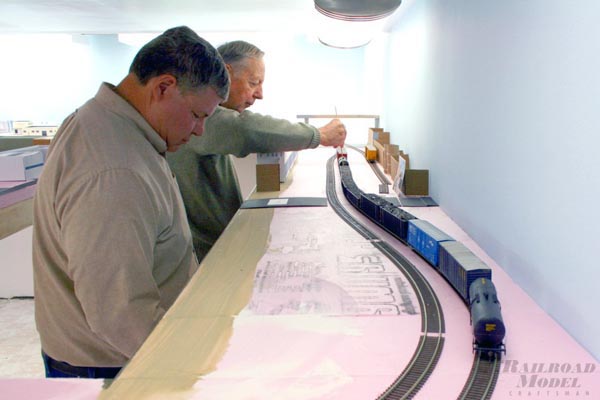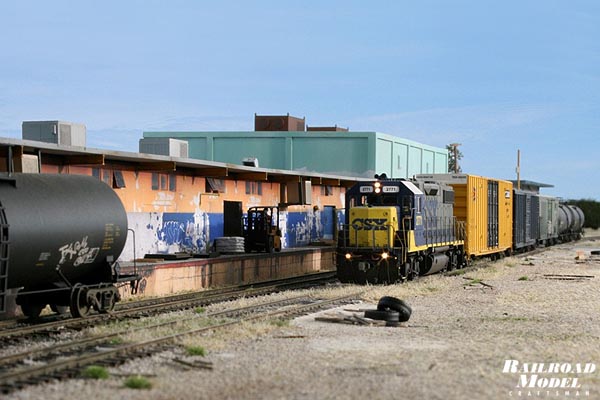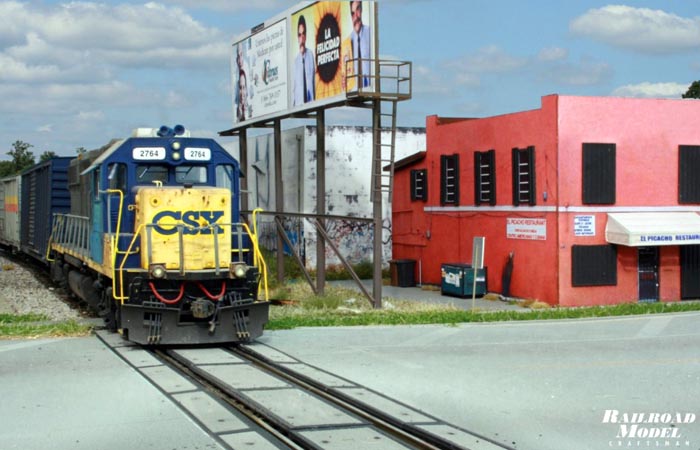by Lance Mindheim /photos by the author
How do we “play” with our layouts? It’s an important question because it ultimately determines how much we enjoy our railroad or whether we enjoy it all. Fewer people than you’d expect can answer the question accurately. The result is layouts that sit idle, never serving their intended purpose of providing recreation and relaxation. In many cases layouts are never built because the modeler doesn’t feel he has the space for something that will be satisfying. In other situations layouts are so overbuilt in an attempt to ensure satisfaction that they suffer from overly dense scene composition, a toy like appearance, and un-necessary cost.
How we plan to use and interact with our layout should be the first question we ask, and answer, when designing a layout. My guess is it is rarely asked or answered. If we don’t know how we plan to operate our model railroad, or how long our typical operating session will be, how can come up with a design that satisfies us?
It’s an important issue. If we can teach modelers how to interact with their layouts in a manner that is both fulfilling and easily attainable, the end result will be a more vital hobby as they learn to extract more satisfaction from them. This evolves into becoming more passionate about the hobby as a whole. It can also entice those outside of the hobby, or on the fringes, to jump in. Frankly, as things stand now there aren’t many compelling arguments being communicated to entice people to dive into model railroading or delve in deeper than they are now.

Simple operating sessions are a great way to test layout design ideas before major construction is complete.
The key is to get people operating their layouts more frequently and in a way they find extremely interesting. I’m talking about frequent sessions that are easy to set up and can be run on a moment’s notice, 15 to 45 minutes at a time, and doing so three or four times a week. Such mini-sessions are a wind down after work, after the kids are in bed, or whenever you need to relax type of thing. Most people can find that amount of time several times a week. The more frequently we operate, the more we stoke our interest level and the better the layout runs. Operating this frequently (even if it’s only ten minutes) transforms the hobbyist from an observer to an active participant.
When it comes to operating session length somewhere the notion crept into our culture that the sessions had to be several hours long and involve multiple operators. Not so. In theory it would be nice to have this capability on occasion. In the real world, however, even if our layouts could provide sessions this long, the reality is that most folks would only run such full blown sessions once or twice a year, if that. Sub-consciously modelers tell themselves that if they can’t do the full three hour session then they just won’t run until they can. It never happens. Layouts sit idle and the owner begins to wonder why he built the darn thing in the first place.
To be clear, I’m strongly against artificially induced complexity to make a task longer. Such an approach is totally counter to the way a real railroad is run. Artificial complexity equates to frustration., not enjoyment. Rather, I’m suggesting that we avail ourselves of the knowledge of how a crew actually goes about their work, modify it as necessary for model railroad use, and copy the work in our sessions. Railroading is hard and often tedious work. Each individual has to make their own decision as to where to draw the line in terms of what adds to the experience and what detracts. One person may want to simulate the full ten minutes it takes for a brake test, another may represent it with a shorter pause.

A local crew switches cars near the Family & Son warehouse. Even the simple act of setting out a single boxcar can be an enjoyable half-hour of time operating your model railroad.
The result of understanding the full spectrum of the real job of railroading helps us recreate it in miniature. Just taking an evening to switch one warehouse siding on your layout can help you better understand what your guests might experience during an operating session. Running trains without the pressure of invited guests and the anxiety of keeping the railroad fluid means you have more time to appreciate your work, as well. Take time to enjoy the details. Taking a few nights to keep traffic moving on your layout will go a long way towards making operating your model railroad something to look forward to and enjoy rather than dread.
There is a direct relationship between the desired length of our operating sessions and layout design. If we don’t feel the design will provide enough operational interest or a long enough session, we often compensate by adding more sidings… and more… and more. Generally the problem isn’t a lack of opportunity for operational interest but rather a lack of information. As we learn more about how the prototype does it, additional tasks and interest are added. The more we know, the more tasks we have the opportunity to model, the longer and more interesting the session becomes. By default, the longer it takes to switch a given industry, the fewer industries and less track we need in our designs. This means smaller and simpler layouts are needed to entertain us and it opens up the door to a broader spectrum of people that can enter and actively engage in the hobby.
This article recently appeared on Lance Mindheim’s web site, used with permission.



